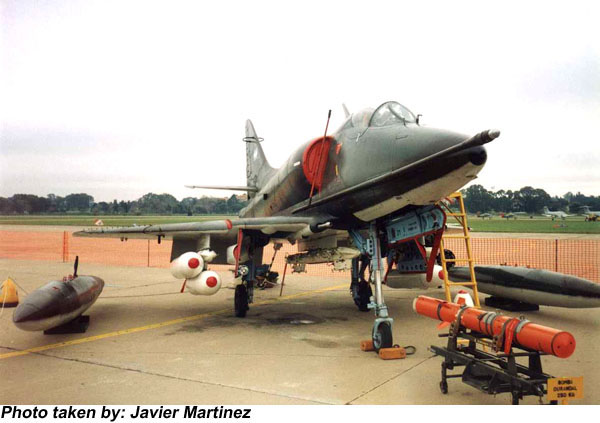The last carrier-based A-4s involved in the Vietnam War overlapped with the introduction of laser-guided bombs (LGBs). These were conventional bombs modified with a laser seeker, simple guidance computer, and controllable fins. The target was designated by a laser beam that the LGB could detect and home in on. The accuracy was outstanding, with the LGBs hitting within a few feet of the designated spot. The first laser-guided bomb drop at China Lake was made in early 1970, using a ground-based laser and a simple deviation meter in the cockpit of the A-4 carrying the bomb.
Since the Navy A-4s were in the process of being replaced, the implementation of laser designation capability was very limited. Some of the VA-164 A-4Fs deployed on Hancock with Air Wing 21 in 1973 were equipped with a Laser Spot Tracker (LST) in the nose and a Ferranti gun sight that displayed the spot being designated by a laser in another aircraft or by a person on the ground.
Independent of a similar U.S. Air Force program effort, China Lake had developed a hand-held designator, known as the Light Weight Laser (LWL). Roughly the size of a cigar box, it could be installed in a TA-4, A-6, or F-4 in about 45 minutes. Six LWL units were fabricated and distributed to selected squadrons for combat evaluation, one of which was VA-164. To provide the designation capability, VA-164 borrowed two TA-4Fs configured with armor and ECM avionics from a Marine unit based at MCAS Iwakuni, Japan. The squadron Ordnance Warrant Officer and LDO Assistant Maintenance Officer, both non-pilots, volunteered to be trained in the operation of the LWLs and fly in the back seat on combat missions to provide designation of the target while the pilot in the front seat circled it. (It's not clear that this is one of those two; it doesn't have obvious ECM antennas.






